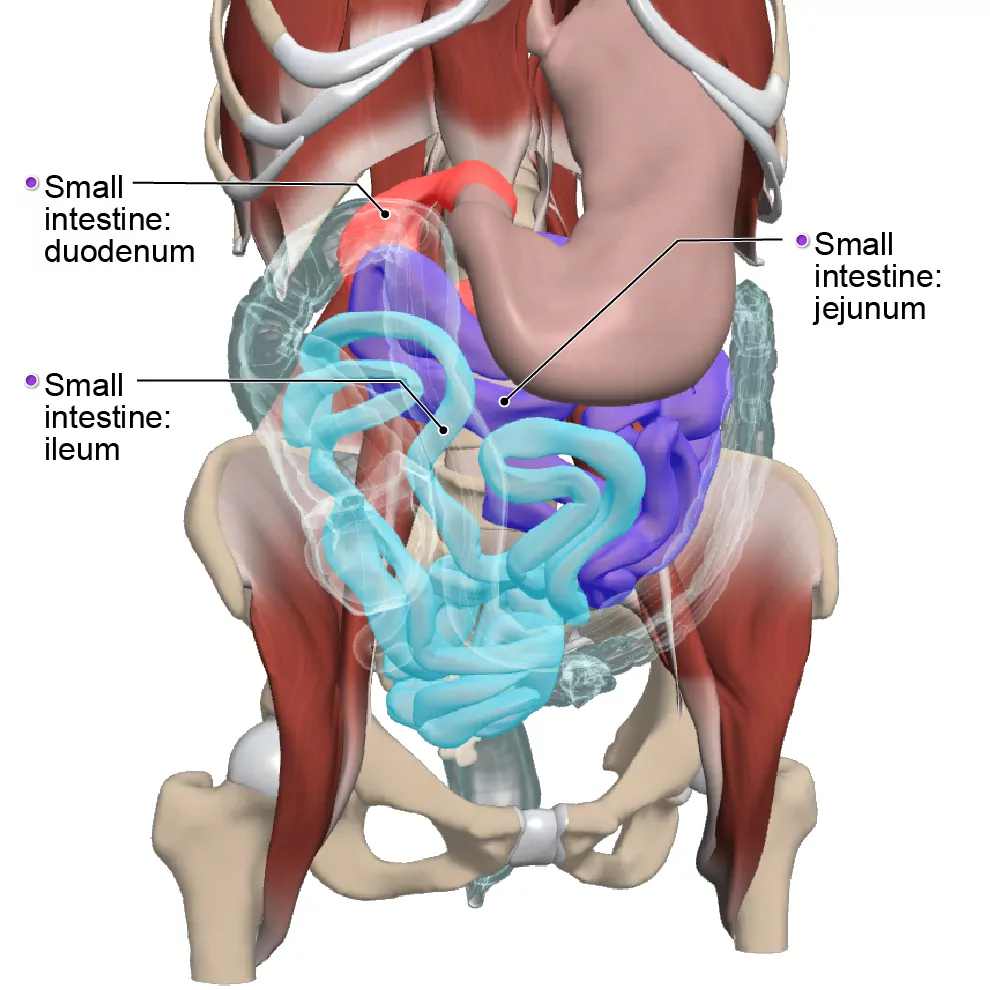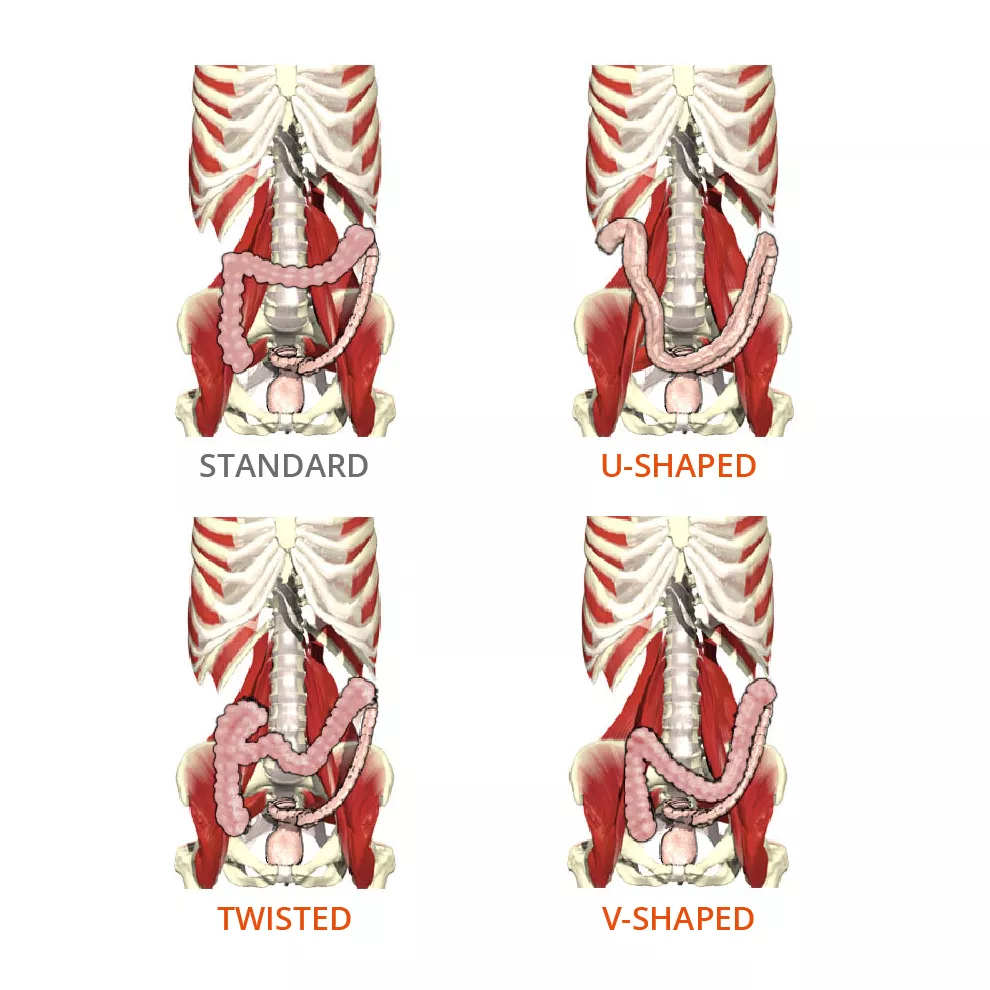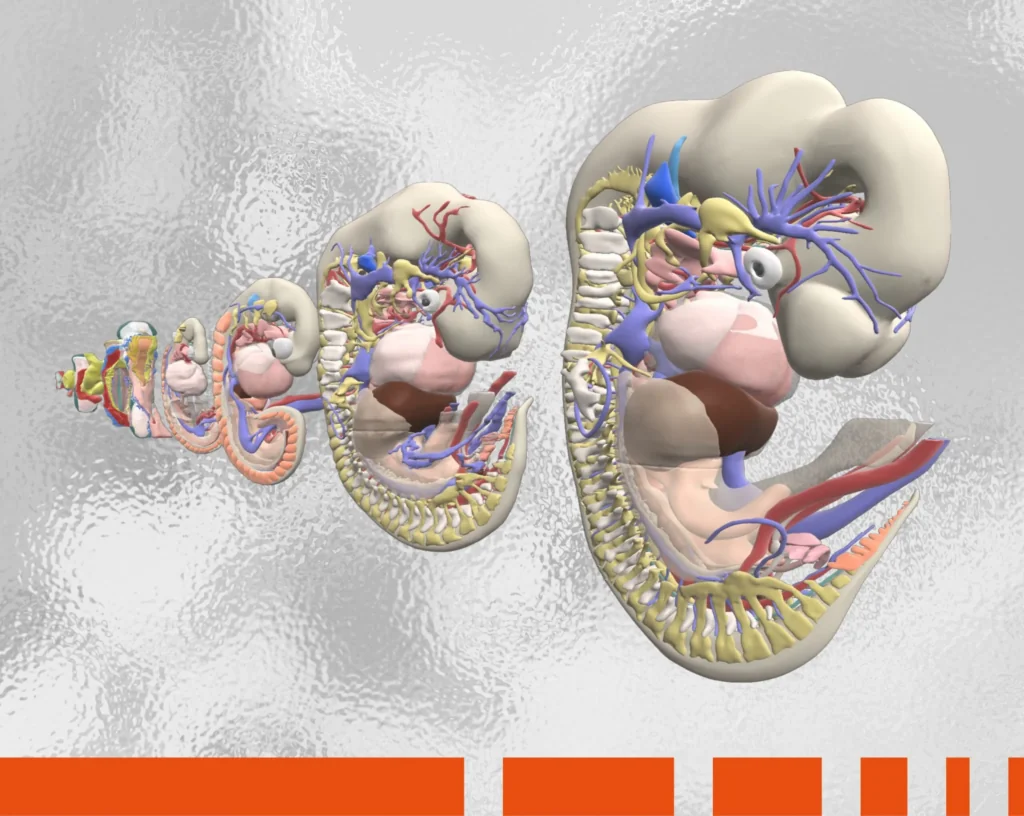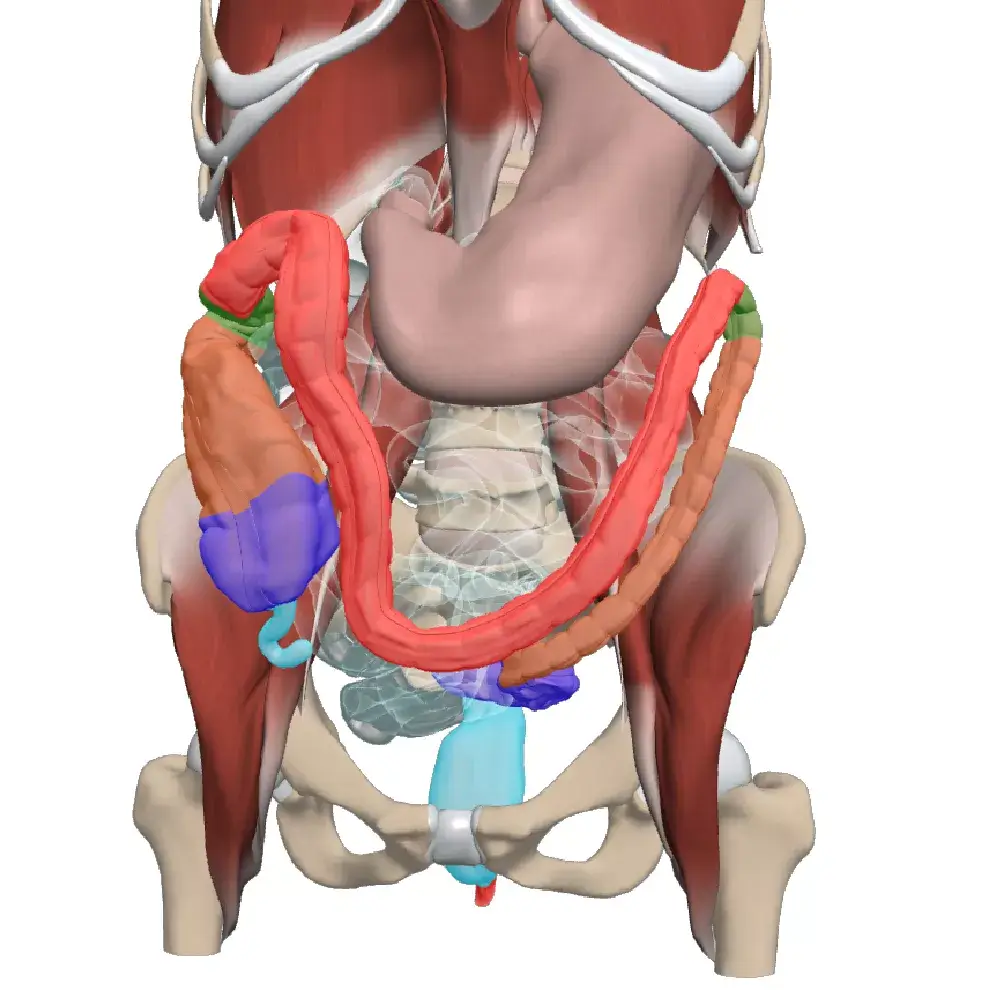We are all unique in the way we look, think and behave, and so is our anatomy. Yes, we have organs in common, but their shape and position can vary from individual to individual.
This article will explore anatomical variation in the shape and position of the transverse colon, and cover possible causes, symptoms and treatments associated with transverse colon variations. But to start, we’ll take you through the basic anatomy and physiology of the intestines.
Don’t worry, we’ve gut you covered!
Anatomy and Physiology of the Intestines
Let’s begin with the basic anatomy and physiology of the intestines. The intestines are composed of two parts: the small and large intestine.
Small intestine
The small intestine is a long tube approximately 6 m long that connects the stomach to the large intestine. Food matter passes from the stomach into the small intestine, which is the main digestion and absorption site for water, proteins, carbohydrates (sugars) and lipids (fats).

The small intestine can be divided into 3 parts:
- Duodenum
- Ileum
- Jejunum
Large intestine
The large intestine is a muscular tube approximately 1.5 m that connects to the ileum of the small intestine at one end and the anus at the other. The main function of the large intestine is compaction and defecation. Compaction occurs as water and salts are further absorbed from food matter to make a solid waste material called feces. The feces get pushed through the rest of the large intestine to be excreted via peristaltic contraction, a process known as defecation.

The large intestine can be divided into the following parts:
- Vermiform appendix
- Cecum
- Ascending colon
- Transverse colon
- Descending colon
- Sigmoid colon
- Rectum
- Anal canal
Transverse colon
In this article, we are going to look further at the transverse colon. As the name suggests, it travels transversely across the abdomen and is approximately 50 cm long. The transverse colon is connected to the ascending and descending colon via the colic flexures.
From the image above, you might have noticed the transverse colon is U-shaped rather than going horizontal. This is because Primal Pictures’ 3D model is reconstructed from real human data and this individual did in fact have a transverse colon variation. Other transverse colon variations will be introduced later in the article, so continue reading to find out more.
The transverse colon is more mobile compared to other parts of the large intestine. Most of the large intestine is anchored to the posterior abdominal wall behind a membranous sheet called the peritoneum. The transverse colon, however, sits within the peritoneum and attached by a slip of peritoneum, called the transverse mesocolon, that can be variable in length. This gives the transverse colon the ability to move and more likely to vary in position.
Transverse Colon Variation
Anatomical variation in the shape and position of the transverse colon can be caused by several factors including the length of the large intestine, increased mobility, the length of the transverse mesocolon, and the position and angle of the colic flexures.

The illustration above shows four different variations of the transverse colon compared to the standard position:
- U-shaped transverse colon is longer in length, with the right and left colic flexures located relatively on the same level (this is the variation in Primal Pictures’ 3D model)
- Twisted transverse colon has multiple shallow curves
- V-shaped transverse colon has one big curve, possibly due to the shorter ascending colon causing the left colic flexure to be located far below the right colic flexure
It is important to understand and recognize such variations so that it is possible to distinguish them from pathological and clinical conditions.
Causes of Transverse Colon Variation
Differences in the shape and length of the transverse colon can be caused by multiple factors. These may include:
- Congenital abnormalities, where some infants are born with a longer transverse colon than others
- Genetic predisposition, where it is inherited via family
- Sex, as the average mean colon length tends to be greater in females than males
- Insufficient fiber in diet that could harden the feces, which can increase pressure applied to the intestinal wall, thereby causing damage and lengthening due to loss of elasticity
- Prolonged straining, often caused by chronic constipation, that can damage the intestinal wall resulting in loss of elasticity
- Clinical conditions, such as chronic irritable bowel syndrome (IBS)
When Variation Becomes a Clinical Condition
Some people may not be aware that they have a variation as it can be asymptomatic, where no symptoms are present. However, if the transverse colon is or becomes exceptionally longer than the standard length then it is sometimes referred as a redundant colon and the following symptoms may present:
- Bowel problems, such as constipation, when due to an elongated length the feces travel more slowly and may get stuck – this can also lead to abdominal discomfort and pain
- Nausea and/or skin problems, such as acne and pimples, due to the prolonged blockage causing a build-up of toxic substances in blood
Different types of treatment can be given depending on the severity of symptoms. Treatments often include:
- Laxatives, which can be either over the counter (OTC) or prescribed by physicians
- Drinking plenty of water, which can help in digestion and passage of food along the intestine
- A fiber-rich diet, which can help soften the feces, thereby allowing them to easily move along the intestine and be excreted
When to Seek Emergency Medical Help
In some rare cases, the redundant part of the transverse colon can twist around itself and cause a serious medical condition known as volvulus. This requires an immediate surgical treatment called a colectomy, which removes the affected part of the transverse colon, as the condition can cause severe abdominal pain, bowel infarction, vomiting or even death if left untreated.
The images used in this piece have been taken from Primal Pictures’ 3D Real-time module and the Human Anatomy and Physiology module. To learn more about this or other Primal digital content – please fill in the form here and our team will be in touch.

